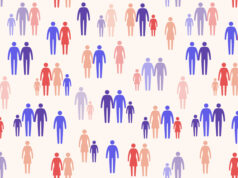
Patients are not islands, nor does medicine exist outside of society. Alliances of family, friends, community partners, caregivers, and clinicians accompany us through even the most acute health care experiences. Recognizing and building on these coalitions promotes people-centered care by activating relationships, supporting people through equity, and overcoming dehumanizing environments with solidarity — I am in this for you because I know that you are in it for me; we are in this together. How might such people-centered care impact health outcomes? Let’s reflect on this question through the story of Diego Naranjo.
Diego’s story
Diego Naranjo rose with great difficulty early on the morning of May 14, 2018, having tried to sleep off a combination cold and fever over the weekend, and drove to a client meeting in Medellín, Colombia, that he felt he could not miss. He exited the meeting unable to stop coughing and hardly able to breathe and called his wife Claudia to say that he needed to go to the emergency room and would pick her up on the way. Diego was quickly diagnosed with pneumonia and hospitalized, then taken to the intensive care unit (ICU) to be intubated as his condition deteriorated. The next thing he knew, he struggled to open his eyes, sensed Claudia’s presence, and told her that he loved her. She caressed his face and responded with great emotion that he was in the Clínica Cardio VID of Medellín, had been in a coma induced by the H1N1 influenza for 75 days, and should be careful not to move because he was connected to a machine (ECMO) that was keeping him alive.
Diego had received exceptionally high-quality care throughout his coma, which continued through his recovery. A key ingredient, perhaps the key ingredient, was the bond established between his family and the team of health care providers and caregivers. Family and community members arrived from day one to support him and Claudia in any way possible, and they were permitted significant access. They established relationships with doctors, nurses, assistants, even the cafeteria staff, and their contagious love for Diego gelled with the positivity and warmth of his care team, even in the most difficult moments. The medical team communicated frequently and openly with Claudia and others, engaging them in important decisions, and took up Diego’s cause as their own, showing genuine enthusiasm for every glimmer of hope and sign of progress.
This solidarity humanized Diego’s difficult treatment (one grandson counted 18 tubes and hoses coming in and out of his body) in the face of multiple near-death experiences, fostering trust that enabled the medical team and family to make effective and rapid decisions at critical moments, such as deciding to take him off the ECMO. “It was all or nothing!” Claudia wrote in her diary. “I told them yes, let’s go for it, and we jumped into the water.” The unity of support from loved ones, clinicians, and caregivers — when combined with his faith — kept Diego committed to life through the most difficult moments of his recovery. When he first opened his eyes, when he came off the ECMO, when he took his first steps, when he was finally cleared to go home weeks later, they all celebrated moments of mutual victory.
Solidarity in people-centered care
Since the groundbreaking 2001 Institute of Medicine report Crossing the Quality Chasm proposed the patient-centered care model, efforts to improve health care have emphasized health promotion as much as disease prevention. Many health and allied professionals in the United States now use the phrase person-centered care as they seek to address the “whole person.” Diego’s story indicates the potential in following the World Health Organization (WHO) and others in taking an additional step to speak of people-centered care.
In a 2021 report by the National Academies of Sciences, Engineering, and Medicine on high-quality primary care, the authors write that “… relationships with the people, their families, and the communities being served; and equity, which acknowledges and empowers those people, families, and communities … represent an important transition in how primary care needs to move forward in the twenty-first century.” I would add solidarity as the critical galvanizing force necessary to overcome the institutional legacy of dehumanizing health care systems. Imbuing people-centered coalitions with solidarity for our health — the sense that we’re in it together — requires mutual trust and commitment and even, as Diego would say, love.
How do we realize such solidarity? Whether in Colombia or the U.S. or elsewhere, this calls for strong social ties, equitable access to care, and providers enabled to bring their whole selves to work. Four modest system improvements in the U.S. are assisting with valuing and activating people’s families and support networks in health care today:
- What would it take for all patients’ supporters to feel as welcome as Diego’s did in the ICU, accompanying their loved ones and participating with medical teams in caregiving and decision-making? The adoption of flexible hospital visitation policies has shown progress in this regard, of course with dramatic setbacks during the Covid-19 pandemic.
- Medical respite, in which a professional “subs in” for an individual’s primary caregiver, usually a family member or close companion, for a meaningful number of days per year also supports family involvement. In California, 336 hours annually of medical respite are now a covered benefit offered through the state’s Medicaid program, enabling people to remain at home who otherwise might be institutionalized.
- A third positive development is the increasing adoption of policies and technology platforms that give trusted family and companions access to the medical record and empower them to collaborate with medical staff and other service providers as participants on the care team.
- In linguistically diverse environments, the uptake of AI and machine translation tools for communication between caregivers and families can address key gaps in translation services. Health care providers are just scratching the surface in learning how — and how not — to use such methods to establish solidarity with their patients and patients’ support networks.
Conclusion
Diego writes in his book that a much younger man was admitted around the same time as him to the same high-quality medical facility with the same condition, H1N1, and was also connected to an ECMO. This young man did not have any visitors, he was intolerant with the nurses and other staff, and could be heard shouting at them. Tragically, he died within a week. We don’t know anything about his circumstances except that he did not receive support from family or community in the ICU, as Diego did, nor did he feel solidarity with the medical team — and he suffered a dramatically different outcome.
Dr. John Rowe, a professor of health policy and aging at Columbia University, tells his medical students, “One of the best indicators of how well an elderly patient will be faring in six months is to ask him ‘how many friends or family he’s seen in the last week.’” In reflecting on his own experience relative to that of others such as this man, Diego writes, “I am certain that science is fundamental… I simultaneously have the certainty and am a living witness that love and solidarity have an enormous curative effect beyond giving the patient an irreplaceable incentive to seek improvement.” Linking arms with individuals, their families, and their communities enables health care stakeholders to harness this power of love and solidarity, enriching today’s whole-person approaches with people-centered care at the heart of health.
Photo: gmast3r, Getty Images








